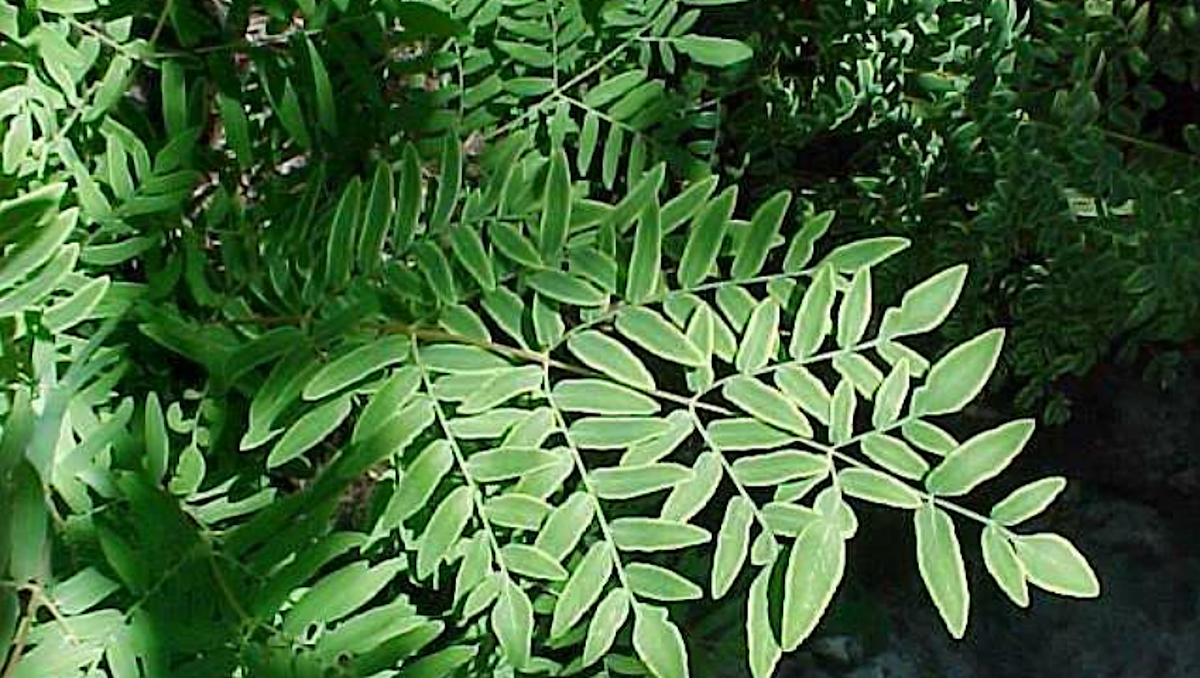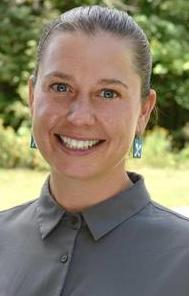Amanda Grusz is a UMD assistant professor and the director of the Olga Lakela Herbarium, one of the 101 university herbaria in the U.S. She came to UMD in 2018 with a strong botanical background and a history of the danger and excitement that goes along with collecting unique plant specimens.
Findings Ferns, and More
Hundreds of thousands of tourists and pilgrims come to the Batu Caves in Malaysia each year to see the towering gold statue of the Hindu god of war on the steep limestone crags. In 2016, Grusz was among the people being pestered by aggressive monkeys at the site. As part of a National Geographic team, she was sent to this high outcropping to study a rare fern, Calciphilopteris alleniae, which grows exclusively on limestone. The group ventured around to the back side of the statues, caves, and crowds, and through an overflowing latrine.
They began their ascent up the limestone and one-by-one, using a thick vine to hoist themselves up a particularly steep section. Grusz made it to the top of a ledge and turned to hand off the vine to a colleague below. She found herself face to face with a poisonous hump-nosed viper. “Three people had just grabbed that vine and used it to pull themselves up!” Grusz remarked, “Old world snakes usually have neurotoxins which means their bite is not something you recover from easily, if at all. Thankfully the hump-nosed viper is a docile snake for how deadly it can be.” The researchers were safe.
Grusz's work has taken her all over the world and gained her the nickname, “Fern Doctor.” Not only has Grusz been to Malaysia to search for and study rare plants, she has traveled to Austria, Belize, Canada, Costa Rica, Mexico, Peru, Scotland, and many parts of the U.S.
Growing UMD’s Herbarium
Grusz’s arrival into Duluth for her interview was not particularly smooth, literally. She came in on a small puddle jumper that had to fight through heavy turbulence before landing. The visit was to Duluth was smoother after that.
She enjoyed the cozy winter atmosphere of Duluth and was won over by “the enthusiasm of the staff and faculty, it was all infectiously positive. They were transparent on where they could improve and were a functional department.” Grusz has not regretted her choice to come to UMD, “There is no place like Duluth to work… people at the top of their field [are] teaching and doing research. The ability to do both is seen as a pipe dream, it is what every young professional in my field is looking for.”
A part of Grusz’s vision for the Olga Lakela Herbarium involves digitizing all of the 50,000 specimens in the collection. “Herbariums function a lot like libraries -- they are a part of a [world-wide] system and any other herbarium in that system can check out our specimens.” Grusz notes on the importance of making the specimens accessible online. Currently the Olga Lakela Herbarium is about halfway through the process of digitizing their specimen collection thanks to the work of Grusz and her students.
Travel across the world is not necessary to find interesting biodiversity. Duluth is home to its own rare flora. Grusz’ students in her botany classrooms are embarked on a unique endeavor, “We are collecting all the native plants at Glensheen [historic estate] to document them and find the evolutionary history or connections between them. It helps people see the ‘plant-cestry’ of their own backyards.”
As Grusz explained, Duluth has a very interesting ‘plant-cestry’, “Duluth is right on the edge of northern hardwood forests and southern boreal forests. Which puts us in a great location to study how changes in climate affect these ecosystems.” She continued, “On top of that, Duluth exists on an arctic disjunct.” The granite on the north shore of Lake Superior is home to these arctic plants.
Visitors are welcome to explore the Olga Lakela Herbarium online and to connect with Grusz. She promises the collection will grow even larger in the future and she is looking at ways to connect students and the community to additional opportunities.
----
About the Olga Lakela Herbarium
About UMD's Department of Biology
This story was co-written by UMD student Jack Harrington, who is majoring in writing studies and minoring in sociology and LGBT studies. Jack works with Cheryl Reitan in University Marketing and Public Relations.

